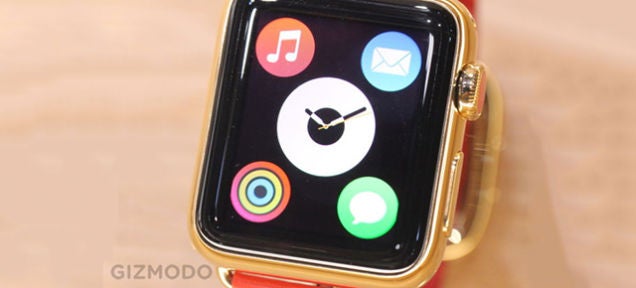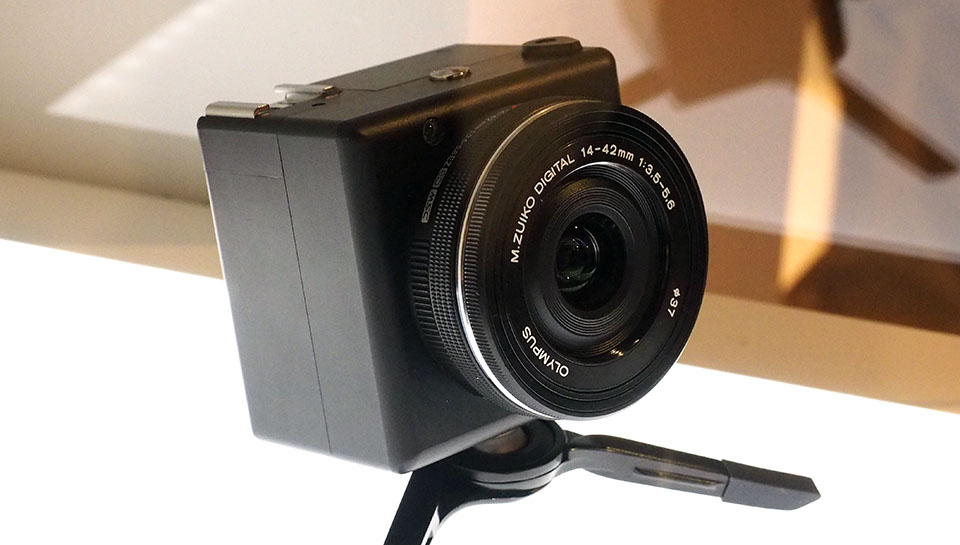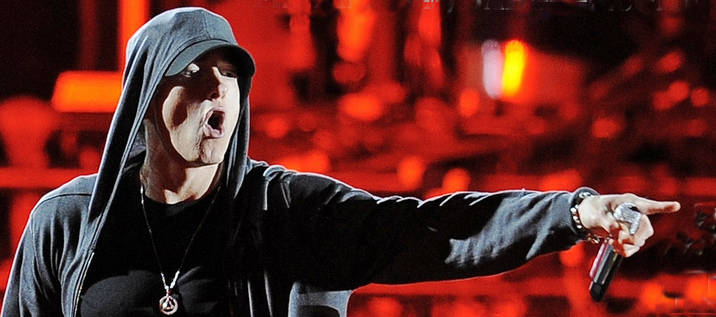Consider Vertu, the company that sells $6,000 Android phones (and which, back in the day, sold $6,000 Symbian phones). Back in January 2012, I wrote a short entry saying that Vertu always reminded me of this wonderful quote from Andy Warhol:
“What’s great about this country is that America started the
tradition where the richest consumers buy essentially the same
things as the poorest. You can be watching TV and see Coca-Cola,
and you know that the President drinks Coke, Liz Taylor drinks
Coke, and just think, you can drink Coke, too. A Coke is a Coke
and no amount of money can get you a better Coke than the one the
bum on the corner is drinking. All the Cokes are the same and all
the Cokes are good. Liz Taylor knows it, the President knows it,
the bum knows it, and you know it.” —Andy Warhol
That’s what the iPhone and iPad are like. There are hundreds of millions of people who have bought these products, and they now own the best phones and tablets in the world. A few years ago at SXSW in Austin, I saw Michael Dell waiting outside a restaurant. The thought that popped into my head: He’s a billionaire, but I know for a fact that I have a better phone than he does. Not everyone can afford an iPhone, not by a long shot, but everyone who can knows they’re getting the best phone in the world.
Apple Watch changes this dynamic.
Adam Fields, writing on Medium, drew the same comparison to my Warhol-on-Coke/Vertu piece:
Gruber was talking about the $6,000 Vertu there, but he might as
well have been talking about the Apple Watch. Apple has long been
‘the luxury brand’, but it’s been an accessible luxury, unlike
luxury cars or jewelry. The products are expensive, but they’re
not outrageously expensive (and if they are, it’s because they’re
so massively overpowered that most people really don’t actually
need them). Apple has even been steadily pushing prices down and
making their products more consumer-friendly so they’re now in
some cases a markedly better value than what their competitors
offer. With the Apple Watch, that is no longer the case — there’s
a gold version whose only substantial differentiating feature is
that it’s more expensive. Because it’s “gold” and not
“gold-colored”, it’s not just a style choice, it’s a lifestyle
choice. In other words — it’s the watch that most people won’t
have. I’m sure the fashion experts have plenty to say about this
from the perspective of desirability, but it’s a real shock to the
standard approach of the tech world. I think Apple knows this, too
— which results in the strange nomenclature. The only way they
could name it that doesn’t sound overtly elitist is the awkward
“Edition” edition.
Apple Watch is not a product from a tech company, and it will not be understood, at all, by the tech world. Apple creates and uses technology in incredible ways. The Apple Watch may prove to be the most technologically advanced product they’ve ever built. But again: Apple is not a tech company, and Apple Watch is not a tech product.
The most fun I’ve had over the past week is speculating with friends about how much the different tiers of Apple Watch are going to cost. One thing that is absolutely clear, to me at least: when Tim Cook said the starting price is $349, that’s for the aluminum and glass Sport edition. My guesses for starting prices:
- Apple Watch Sport (aluminum/glass): $349 (not a guess)
- Apple Watch (stainless steel/sapphire): $999
- Apple Watch Edition (18-karat gold/sapphire): $4,999
In short: hundreds for Sport, a thousand for stainless steel, thousands for gold.
Most people think I’m joking when I say the gold ones are going to start at $5,000. I couldn’t be more serious. I made a friendly bet last week with a few friends on the starting price for the Edition models, and I bet on $9,999.
The lowest conceivable price I could see for the Edition models is $1,999 — but the gold alone, just as scrap metal, might in fact be worth more than that. Here’s a link to a forum discussion pegging the value of the gold alone, as scrap metal, of a Rolex GMT (including bracelet) at $5–6000. Just the gold alone.
A few days ago John Biggs at TechCrunch wrote “The Gold Apple Watch Could Cost as Much as $1,200”:
A jewelry contact familiar with the matter told TechCrunch that
the gold, 18-karat version of the Apple Watch could cost around
$1,200 retail when it launches in January. This has been
corroborated, based on size and weight, by jewelers familiar with
the material Apple is using to make its Apple Watch Edition
pieces. It should be noted that this is an estimate and the piece
could come in well below that price.
Although there is still some confusion as to whether the watch
will be gold plated or actually made of gold, the jeweler
suggested that it would be sub-optimal not to make the watch out
of solid gold alloy, a decision that will drive up the price.
There should be no confusion on that last part. The Apple Watch Edition is solid 18-karat gold, not gold-plated. I confirmed this with Apple last week. You can feel it when you try one on: the stainless steel watch is noticeably heavier than the aluminum Sport one, and the gold Edition models are noticeably heavier than the stainless ones.
Try to find a premium solid gold watch that sells for under $20,000 retail. Most luxury watch companies don’t publish their retail prices — they leave it up to their authorized dealers to set final prices. But, no surprise, if you search around, you can find leaked copies of their catalog price lists. Here’s one for Rolex from 2012. To pick just one example, compare a few Submariner Date models:
- Stainless steel: $8,550
- Stainless steel and yellow gold: $13,400
- 18-karat gold: $34,250
- 18-karat white gold: $36,850
Now, Rolex is Rolex, and their watches are all priced at a significant premium based on the brand alone. But the only difference between those four Submariners are the materials from which their cases and bracelets are made. Functionally, they are identical, using the exact same movement.
Compare prices on the used market — solid gold Rolexes carry at least a $10,000 premium over stainless steel, and depending upon the condition of the watch, often more like $20,000. Or look at other brands, like, say, Omega.
Or consider just the bracelets. A replacement stainless steel Rolex bracelet costs $2,500; a gold one costs $9,000. Those prices are gray market — I’m guessing bracelets from an authorized dealer cost even more. That’s the market Apple is entering. And consider what Apple is saying about their bracelet:
Crafted from the same 316L stainless steel alloy as the case, the
Link Bracelet has more than 100 components. The machining process
is so precise, it takes nearly nine hours to cut the links for a
single band. In part that’s because they aren’t simply a uniform
size, but subtly increase in width as they approach the case. Once
assembled, the links are brushed by hand to ensure that the
texture follows the contours of the design. The custom butterfly
closure folds neatly within the bracelet. And several links
feature a simple release button, so you can add and remove links
without any special tools. Available in stainless steel and space
black stainless steel.
Nine hours per bracelet, 316L stainless steel, and it’s just gorgeous. I don’t think it’s going to cost $2,500, but it’s going to be expensive. I’ll bet this bracelet, alone, will cost more than the $349 Apple Watch Sport. I got to see all the bands in person, and design-wise, they’re simply amazing. Whatever you want to say about the functionality and design of the Apple Watch itself, Apple has raised the bar for the entire luxury watch industry in terms of band and bracelet design.
(Consider too, that Apple has only shown metal bracelets for the stainless steel Apple Watch. Why not a solid gold link bracelet for the Edition, as well? That strikes me as a glaring omission.)
In short, Apple is taking on the entire hundred-dollar-and-up watch industry at once, with a range of models and prices that span the gamut from $349 to $10,000 or more. They never even mentioned the word “smartwatch” last week, just “watch”, and never once even acknowledged any competition from the tech industry. (Nor does the word “smartwatch” appear anywhere on Apple’s website.) The only comparisons Apple is making are to the traditional watch industry, and their prices are going to reflect that, I believe.
When the prices of the steel and (especially) gold Apple Watches are announced, I expect the tech press to have the biggest collective shit-fit in the history of Apple-versus-the-standard-tech-industry shit-fits. The utilitarian mindset that asks “Why would anyone waste money on a gold watch?” isn’t going to be able to come to grips with what Apple is doing here. They’re going to say that Jony Ive and Tim Cook have lost their minds. They’re going to wear out their keyboards typing “This never would have happened if Steve Jobs were alive.” They’re going to predict utter and humiliating failure. In short, they’re going to mistake Apple for Vertu.
And then people will line up around the block at Apple Stores around the world to buy them. I think Apple Watch prices are going to be shockingly high — gasp-inducingly, get-me-to-the-fainting-couch high — from the perspective of the tech industry. But at the same time, there is room for them to be disruptively low from the perspective of the traditional watch and jewelry world. There’s a massive pricing umbrella in the luxury watch world, and Apple is aiming to take advantage of it.
Mysteries
Apple has never announced a product like this before. They pre-announced the original iPhone months in advance, but at its announcement they demonstrated nearly all of its functionality, they gave a firm shipping date, and they announced the full pricing range.
Last week Apple only demonstrated a portion of Apple Watch’s functionality, gave a vague shipping date of only “early 2015”, and announced only a $349 “starting price” that I believe has grossly misinformed the expectations of many people for the prices of the steel and gold models.
What does Apple Watch actually do? Or, rather, what does WatchKit allow? We don’t know. And Apple is not talking, even off the record. One factor is that the software (and perhaps the hardware internals) remains a work in progress. It is far from a finished product. Apple’s executives were all wearing working prototypes — I saw Apple Watches on the wrists of Tim Cook, Jony Ive, and Eddy Cue (who wears his left-handed). I’m guessing most of the people listed on Apple’s leadership page were wearing them after the event. But none of the hands-on demo units were running the actual Apple Watch software — all of them were running a canned demo loop, like what you’d see running on one inside a glass display in a store. (This is also why they’re being so vague about battery life; I don’t think they know the final battery life yet.)
But another factor, clearly, is a desire to keep much of the Apple Watch’s functionality and software design secret until it’s closer to shipping. They announced early to keep it from leaking from the Asian supply chain — just look at what happened with the iPhones 6 this year. There’s no Osborne Effect to fear because they aren’t yet selling watches or wearables of any sort — the only watches whose sales might suffer this holiday season because of the Apple Watch pre-announcement are those from other companies.
But we know so little at this point that it’s folly to judge the Apple Watch. Last week, in my prelude to the event, I wrote:
I’ll be very disappointed if this is just a device that shows a
fake analog watch face, displays notifications from a tethered
iPhone, and tracks your footsteps and heart rate.
After the event, a lot of people pointed to that line and asked how I could not be disappointed. But I don’t think that description aptly describes Apple Watch. For one thing, it definitely does a bit more than that. It has internal storage and Bluetooth, so you’ll be able to use it for music playback without taking your iPhone with you. With just your Apple Watch and Bluetooth earbuds you’ll be able to listen to music (and make Apple Pay purchases). I’d probably pay $349 just for that, using the Sport edition as a modern day iPod. Even better, though, I strongly suspect that WatchKit will allow for something like a native version of Overcast — syncing while within Bluetooth range of your iPhone, but working entirely independently as a podcast player, using the watch’s internal storage, when you’re out of range. A version of Vesper where you can dictate new notes on the fly? Now you’ve got something I’d pay at least $349 for in a heartbeat.
Do I know that those things will be possible? No. But Apple Watch’s third-party integration is clearly deeper than just showing notifications from apps on your iPhone. And though it depends upon a tethered connection with your phone for Internet access, it’s far more functional while out of range of your phone than any smartwatch I’ve seen to date. It’s a full iOS computer. If it actually doesn’t do much more, or allow much more, than what they demonstrated on stage last week, I am indeed going to be deeply disappointed, and I’ll be concerned about the entire direction of the company as a whole. But I get the impression that they’ve only shown us the tip of the functional iceberg, simply because they wanted to reveal the hardware — particularly the digital crown — on their own terms. The software they can keep secret longer, because it doesn’t enter the hands of the Asian supply chain.
The biggest mystery of all to me, though, is this. We know for a fact that people will spend thousands, even tens of thousands, of dollars on watches. As a piece of jewelry, Apple Watch is a worthy entry in the market. It’s not to everyone’s liking, and it may not be to yours, but judging from the initial reaction it’s clearly very appealing to many people. (To my mind, it passes my “Would you consider wearing it before you even see what it does, based solely on what it looks like on your wrist?” test.) But Apple Watch is not just a piece of jewelry, and it’s not a mechanical device. It’s a computer. And all computers have lifespans measured in just a handful of years before obsolescence. If you buy a $6,000 mechanical watch and take care of it, you can expect it to outlive you and become a family heirloom. Paying even $1,000, let alone a multiple of that, for a premium Apple Watch seems like folly if it’s going to be obviated by faster, sleeker, longer-lasting versions in just a few years. And I don’t see how it won’t be replaced by faster, sleeker, longer-lasting versions, because that’s how all computer technology goes. Apple Watch is not a tech product, but technology is what distinguishes it — and computer technology gets old fast. A Rolex purchased in 2007 is every bit as good today as it was then. (Arguably even better, given some of Rolex’s questionable design decisions of the last decade.) An iPhone purchased in 2007 is 85 times slower in CPU performance than an iPhone 6, and I don’t even want to think about how much slower EDGE is than LTE networking.
Apple only enters markets where they can be a market leader in quality. They unabashedly claim to make the world’s best computers (portable and desktop), the best phones, the best tablets, and the best MP3 players. The best. Of course not everyone agrees with that. But many of us do, and even those who prefer, say, Lenovo laptops or Google’s Nexus phones and tablets, would agree, if they’re at all reasonable or have any sense of taste, that Apple’s products are in the running for “best”.
The Apple Watch only works for Apple if it is, in some sense, the best watch in the world. Not the best smartwatch. That’s not enough. The best watch, period. The best thing you can wear on your wrist. It doesn’t have to pass that test for everyone. It may well be targeted more at people who’ve stopped wearing or have never worn a watch than at those who love fine mechanical watches. But it has to pass that test for many people.
Further raising the bar: battery life. Judging by what Tim Cook said on stage last week, the best we can hope for is that Apple Watch will make it through each day with room to spare, with nightly charging. Worst case, it’ll be like the Moto 360, which most reviews claim needs to be recharged by mid-day. That’s a deal-breaker to me. But even nightly charging compares terribly to the traditional watch market that Apple is seeking to disrupt. Quartz watches use (inexpensive) batteries whose lifetimes are measured in years. Automatic watches, if worn daily, have no batteries and never need to be wound. They just run for years and years, with regular servicing once or twice a decade. (I own a Citizen Eco-Drive watch that runs on solar power, needing neither winding nor replacement batteries; it cost $100.) We’re already slaves to the daily charging of our phones. We agree to this not happily but readily, thanks to the amazing utility of the modern (post-iPhone) phone. With the Apple Watch, Apple is asking us to commit to the daily charging of a second device. Two things to plug in every night (each with its own different charging adapter). Two types of adapters to remember to pack for travel, for even a single overnight. That’s a lot to ask, especially given that a decade ago, most of us didn’t own a single device that required daily charging.1
How It Might Play Out
My guess is that it’ll play out something like this. The Sport models will vastly outsell the regular (steel) and Edition models. They’re priced like iPods and iPads. The fitness wearable industry is in deep trouble — Apple Watch Sport seems poised to do to Fitbit et al what the iPod did to the MP3 market. And I think it should prove to be the best iPod Apple has ever made — especially in terms of audio playback while working out. That justifies a $349 expenditure right there, full stop.
My impression of Android Wear is that it’s best thought of as a wrist-worn terminal for your Android phone and for Google’s cloud-based services. An extension for your phone, not a sibling device. Android Wear devices are almost useless other than for telling time when out of Bluetooth range from your phone. I don’t think that’s a device that many people want; it’s a solution in search of a problem. Call me biased if you want, but I think Android Wear is simply the result of the rest of the industry trying to get out in front of Apple, out of fear of how far behind they were when the iPhone dropped in 2007. On the surface, they do look like the same basic thing: small color LCD touchscreens on your wrist. But all Android Wear devices are larger and clunkier than the larger 42mm Apple Watch, and none of them are even close to the smaller 38mm one. Is there anyone who would dispute that Apple Watch is far more appealing to women than any other smartwatch on the market?
But the true difference isn’t on the outside. It’s not about the fact that both Android Wear and Apple Watch have color touchscreens. It’s not about the difference in size or style of the hardware. It’s not about price. I think it’s about the fact that Apple Watch is a true breakthrough in terms of how powerful a computer can be shrunk to an amazingly small size. With the iPhone in 2007, you could see that Apple was years ahead of the industry just by looking at the outside of the device. With Apple Watch, I think we’re only going to realize just how big a breakthrough it is after Apple fully unveils its computational power and the depth and complexity of WatchKit. And if I’m wrong, and Apple Watch’s computational hardware is in fact only slightly ahead of existing smartwatches, and that WatchKit is really just a glorified notification display system for iPhone apps, then Apple is in deep trouble.
I do not think Apple is in deep trouble.
As for the stainless steel and gold (with sapphire) versions, as stated earlier, I think they’re going to be priced far higher than the aluminum/glass ones, and will thus inevitably sell in far lower quantities. But I also think they’ll sell in numbers that boggle the minds of the functional-and-spec-minded tech industry. That they’ll have severely limited lifespans compared to traditional timepieces will only make them more notable in terms of fashion and as personal statements. What’s the more ostentatious purchase — a $20,000 Rolex that will last a lifetime, or a $5,000 Apple Watch Edition that will be technically obsolete in four years? If you think Apple is polarizing today, you haven’t seen anything yet.
Additional Thoughts
The most intriguing and notable thing about Apple Watch’s design, to me, is the dedicated communication button below the digital crown. The entire watch is fully operational and navigable using just the digital crown and touchscreen. You can go anywhere and do everything using taps, force presses,2 or turning and pressing the digital crown. There is no need for that extra button (which, in the unveiling video, Jony Ive described only as “the button below the digital crown”). Add to that the fact that Apple is notorious for minimizing the number of hardware buttons on its devices, and the fact that the existence of that button keeps the crown from being centered, and my attention is piqued. The only explanation is that Apple believes that the communication features triggered by that button are vitally important to how we’ll use the device.
The more I see it, the more I like the as-yet-unnamed new typeface Apple is using both for Apple Watch’s on-screen UI and its marketing materials. (The same font is used for the engravings on the back of the watch.) At first glance during the event, I thought it might be DIN (which is what Apple uses in the iOS 7 Camera app), but it’s not. It’s similar to Colfax, but it’s not Colfax. I’ve heard whispers that its name (or codename?) is Cobalt. We may not know for sure until WatchKit ships.
The digital crown feels amazing. It didn’t actually control anything on-screen on the demo watches I handled last week, but it has the most amazing feel of any analog controller I’ve ever used. Lubricious (in the second sense, if not the first as well) is the word that springs to mind.
An idea that sprung to mind regarding the tension between multi-thousand dollar prices for gold watches and the short lifespan of computing technology: Apple could in theory offer significant trade-in pricing for years-old Apple Watches, based solely on the value of the gold alone. Or, perhaps the internals of the watch will be upgradeable. Apple is calling the S1 chip a “computer on a chip”, not a “system on a chip”. Take it in for servicing, and for a few hundred dollars, perhaps you’ll be able to replace your S1 for an S2 in a year, and an S3 the year after that.
Regarding the name “Apple Watch” instead of “iWatch” — I think there are several factors here. The first is that the dropping of the i- prefix clearly delineates the post-Steve product era. Could be that it was Jobs who insisted on the various iNames, or, it could be that today’s Apple wants to move away from them. But the other factor is that the iNames come across as being cute. iMac was for consumers, Mac Pros were serious. “Apple Watch” sounds serious in a way that “iWatch” does not. “iWatch” sounds like a $200 gadget. “Apple Watch” sounds like a multi-thousand dollar luxury item.
Apple’s decision to hire Angela Ahrendts, and her decision to take the job with Apple, now make more sense than ever before. Apple’s retail stores are going to need a serious redesign to accommodate the sale of multi-thousand dollar luxury watches. All sorts of implications, ranging from security to branding, to just plain peace and quiet. One does not buy expensive watches in a noisy room, and Apple Stores are noisy rooms. Cringely thinks Apple will sell Apple Watch in existing high-end watch stores; they might, but I can’t see them not selling them in their own stores.
It’s no coincidence that Apple announced their hiring of Marc Newson on the Friday before last week’s event. But I don’t think his hiring is about the Apple Watch in particular. Nor do I think Apple Watch in particular is what Apple thinks was “historic” about last week’s event. Rather, I think Apple Watch is the first product from an Apple that has outgrown the computer industry. Rather than settle for making computing devices, they are now using computing technology to make anything and everything where computing technology — particularly miniature technology — can revolutionize existing industries. Newson isn’t a watch designer, or a fashion designer. He’s a designer of anything and everything. He’s designed everything from watches to cars to chairs. Apple Watch isn’t merely Apple’s foray into the watch industry — it’s their foray outside the computer/consumer electronics industry. I think they’re just getting started. At the close of his Apple Watch unveiling video during the keynote, Jony Ive said, “We’re now at a compelling beginning actually designing technology to be worn, to be truly personal.” The watch just happens to be first.
‘Liz Taylor Knows It, the President Knows It, the Bum Knows It, and You Know It’
Which brings me back to that Warhol quote about Coke, and whether Apple Watch signifies Apple abandoning egalitarianism. I think not.
The iPhone and iPad are egalitarian devices. All you can buy with more money is additional storage. But the Mac has long offered widely varying pricing tiers with widely varying performance. If you can afford it, a maxed-out MacBook Pro is a far more impressive laptop than an $899 MacBook Air. Or consider a maxed out Mac Pro — 12 cores, maximum RAM and storage, the best graphics card — which costs just under $10,000. That’s better-tasting Coke than you get with an iMac or Mac Mini.
I think the steel and gold Apple Watches are not better-tasting Cokes. They’re the same Coke that everyone can get with the $349 Apple Watch Sport, but served in expensive goblets. It’s uncharted territory, to be sure, but I don’t think it is worrisome that the steel and gold Apple Watches exist. What would be worrisome would be if the $349 Apple Watch Sport did not.
-
I’m hopeful that a decade from now, we’ll look back at devices that needed daily charging the way we now do to laptops that only got two or three hours of battery life. ↩
-
I’ve seen some skepticism about Apple Watch’s use of “force presses”. To wit, that this capability is unneeded — anything you can do with a force press could be done on a regular (non-pressure-sensitive) touchscreen using a long press. I disagree. Force pressing means you won’t have to wait. Talking to Apple people behind the scenes last week, they are very keen on the force press thing. Not quite as keen as they are about the digital crown, but close. ↩





 Last month word got out that 190 Bowery, that massive building on the corner of Bowery and Spring,
Last month word got out that 190 Bowery, that massive building on the corner of Bowery and Spring, 


 It's been a year since Sony launched its range of lens cameras, WiFi-enabled zoom lenses that connect to your smartphone and offer far better pictures than your built-in snapper. For its second generation hardware, the company went one further and...
It's been a year since Sony launched its range of lens cameras, WiFi-enabled zoom lenses that connect to your smartphone and offer far better pictures than your built-in snapper. For its second generation hardware, the company went one further and...








 Apple listens to user feedback, which is evident by the introduction of a new tool that lets users remove the U2 album Songs of Innocence from their iTunes library entirely (via 9to5Mac). The album was given away to all of the over 500 million iTunes registered users as part of Apple’s new iPhone 6 launch last week. But some users (like our own Matt Burns) weren’t thrilled to find…
Apple listens to user feedback, which is evident by the introduction of a new tool that lets users remove the U2 album Songs of Innocence from their iTunes library entirely (via 9to5Mac). The album was given away to all of the over 500 million iTunes registered users as part of Apple’s new iPhone 6 launch last week. But some users (like our own Matt Burns) weren’t thrilled to find…